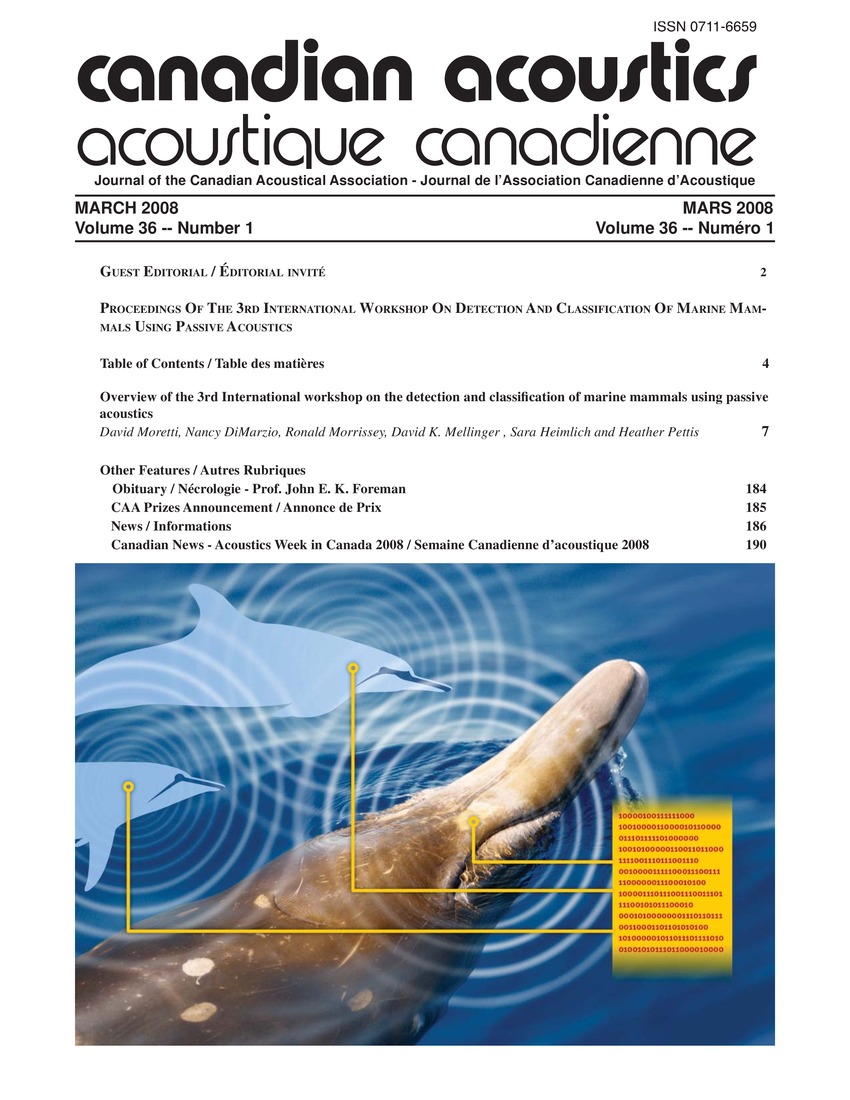Attractive time-variant orthogonal Schur-like representation for click-type signal recognition
Keywords:
Acoustics, Adaptive algorithms, Applications, Extractive metallurgy, Mammals, Offshore oil well production, Signal processing, Signal to noise ratio, Theorem proving, Time varying systems, Marine mammals, Time-varyingAbstract
Analysis of click-type signals in the presence of noise with time-varying statistics is a challenging task, especially in low signal-to-noise ratio conditions. This well-known problem is commonly present in underwater passive acoustics applications. In this paper we present a novel solution for this dilemma as applied to marine mammal acoustics - a well-established basis for marine mammal study and protection. The adaptive orthogonal Schur-like algorithm is proposed to classify medium-frequency odontocete clicks. This technique is characterized by excellent convergence behaviour, very fast parametric tracking capability and robustness. The difficulty of recognition (classification) resides in the extraction of the signal's intrinsic information; i.e. extraction of an efficient signal signature. It is expected that the distances between the signatures within the class are minimal (small intra-class variance) and between the classes are maximal (high inter-class variance). This condition ensures a good recognition performance (separability of classes). The 2D signature proposed in this work and based on a selected set of the time-varying Schur coefficients assures this requirement. When compared to the classical Fourier approach, the proposed recognition method is four times as efficient for inter-class distances and twice as efficient for intra-class distances. The results of the recognition are given for sperm whale (Physeter macrocephalus) regular clicks and striped dolphin (Stenella coeruleoalba) nacchere clicks. They are very satisfactory and promising for other applications. The proposed technique can be easily implemented in real-time applications such as underwater acoustic monitoring systems.Additional Files
Published
How to Cite
Issue
Section
License
Author Licensing Addendum
This Licensing Addendum ("Addendum") is entered into between the undersigned Author(s) and Canadian Acoustics journal published by the Canadian Acoustical Association (hereinafter referred to as the "Publisher"). The Author(s) and the Publisher agree as follows:
-
Retained Rights: The Author(s) retain(s) the following rights:
- The right to reproduce, distribute, and publicly display the Work on the Author's personal website or the website of the Author's institution.
- The right to use the Work in the Author's teaching activities and presentations.
- The right to include the Work in a compilation for the Author's personal use, not for sale.
-
Grant of License: The Author(s) grant(s) to the Publisher a worldwide exclusive license to publish, reproduce, distribute, and display the Work in Canadian Acoustics and any other formats and media deemed appropriate by the Publisher.
-
Attribution: The Publisher agrees to include proper attribution to the Author(s) in all publications and reproductions of the Work.
-
No Conflict: This Addendum is intended to be in harmony with, and not in conflict with, the terms and conditions of the original agreement entered into between the Author(s) and the Publisher.
-
Copyright Clause: Copyright on articles is held by the Author(s). The corresponding Author has the right to grant on behalf of all Authors and does grant on behalf of all Authors, a worldwide exclusive license to the Publisher and its licensees in perpetuity, in all forms, formats, and media (whether known now or created in the future), including but not limited to the rights to publish, reproduce, distribute, display, store, translate, create adaptations, reprints, include within collections, and create summaries, extracts, and/or abstracts of the Contribution.


